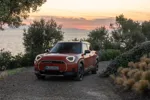SAFED training? Check. Driver assessments? Check. Certificate of Professional Competence? Check.
Bunzl Healthcare has taken a proactive approach to occupational road risk for many years, but group transport manager Mark Moore felt there was more to be done.
The company’s philosophy is that one accident a year is one too many, and while its delivery fleet has never been plagued by large numbers of collisions, the level of occupational road risk was still considered to be too high.
“Back in 2009 we were averaging 4.5 incidents a month at each of our depots,” Moore says. By incidents, he means anything from a minor dent in a front wing to a serious collision with another vehicle.
Moore was convinced that this figure could be reduced if drivers could be continually prompted to improve their driving style.
“Drivers will usually drive sensibly when I’m accompanying them, but clearly I cannot accompany everybody everywhere all the time,” he says.
“I look at various different pieces of technology but I could find nothing that would help drivers to drive better while at the same time providing me with feedback about their performance.”
Instant feedback for drivers
Eventually, he found a possible solution: Greenroad.
The system gives individual drivers instant and easy-to-comprehend feedback about their driving behaviour through the use of a traffic light green-amber-red display installed in the cab.
If they corner too quickly, for example, or accelerate too harshly – practices that may result in collisions – then the display goes red. Drive smoothly and sensibly, and it goes green.
“For me this immediate feedback to the driver was the key benefit,” says Moore.
Speeding was not a big issue for the fleet. “Legislation means that many of our vehicles have speed limiters fitted,” he adds.
Insurance broker Marsh played a key role in Moore’s decision to trial the GreenRoad system.
Eager to support measures that could bring down insurance claims costs, it agreed to fund 50% of the initial expense of installing the system in 15 vehicles based at Bunzl Healthcare’s Enfield, London, depot as a pilot project.
“We felt this depot in particular had the potential to show us benefits because its vehicles operate within and around the M25 ring,” Moore says.
“Its drivers face heavily-congested roads, resulting in stressful driving conditions.”
Blind data used as a base figure
Before the onboard equipment went fully live it was used to collect several weeks of blind data to use as a base figure. The blind profile revealed a 47% incidence of red (high risk) behaviour, with the amber (medium risk) and green (low risk) percentages running at 40% and 13% respectively.
This gave the depot a safety score of 65.
More on page two...

















Login to comment
Comments
No comments have been made yet.